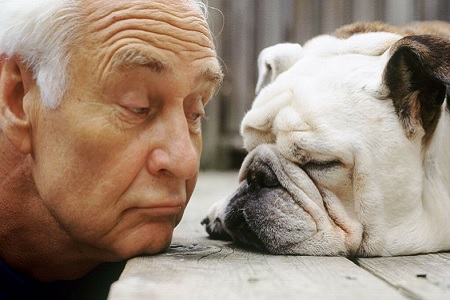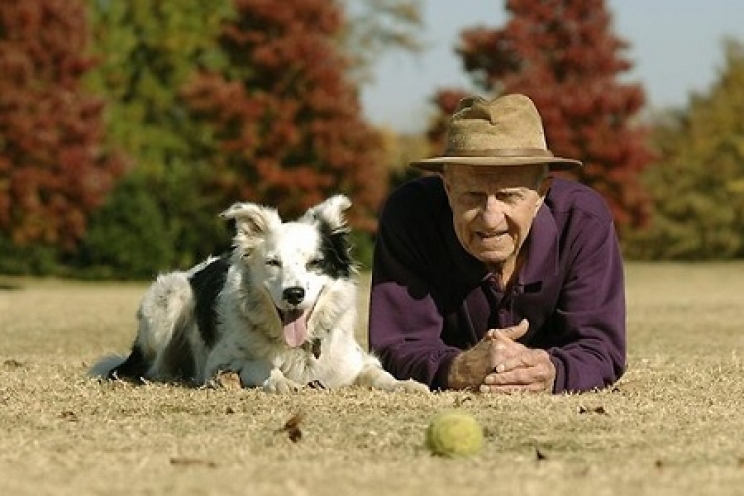As soon as they enter our homes, as puppies or as adults, dogs and cats become in all respects an integral part of our family, and as such, we would never want leave them alone. Unfortunately, however, the time comes for each of us to say goodbye to our friend. What we can do is delay that fateful moment as much as possible by following some tips to extend the lifespan of our animals.
What does life span depend on?
Compared to several years ago, dogs and cats can now boast a truly remarkable life expectancy. Certainly much of the credit goes to the progress achieved by veterinary medicine, but it is also true that our vision of the relationship with animals has drastically changed. In the past, in fact, there was a tendency to consider dogs and cats from a profit point of view, rather than company. The dog is a valid ally to watch the courtyard, look after the flock or go hunting, whilst the cat "served" above all to keep mice away.
Over the years, the concept of pets has developed more and more, so the dog and cat have definitely become faithful allies and members of our family. Therefore, attention to their health has also increased significantly. The veterinarian, (who previously was called almost exclusively to treat large farm animals) today has specialized in the care of dogs and cats, increasing their life span.
Among the conditions that can most affect the quality and life span of our animals, we find:
- Sterilization
- Home life
- Vaccinations
- Drugs
- Prevention
- Diagnostic tests
- Proper nutrition
- Dental care
In addition to these aspects, we also find a series of individual factors, related for example to the animal itself or to breed, species and age, such as:
-
 Breed: crossbreeds have a greater resistance than pure-bred animals, for a phenomenon called "hybrid vigour" or "heterosis", thanks to which the positive genetic characteristics of the ancestors are increasingly strengthened with each generation. Pure breed dogs and cats, on the other hand, often tend to reinforce some "negative" characters, which mostly correspond to some ailments or diseases. The typical example is the German Shepherd's hip dysplasia. For more information, you can visit this interesting database from the University of Cambridge, which collects all the main conditions related to the breed;
Breed: crossbreeds have a greater resistance than pure-bred animals, for a phenomenon called "hybrid vigour" or "heterosis", thanks to which the positive genetic characteristics of the ancestors are increasingly strengthened with each generation. Pure breed dogs and cats, on the other hand, often tend to reinforce some "negative" characters, which mostly correspond to some ailments or diseases. The typical example is the German Shepherd's hip dysplasia. For more information, you can visit this interesting database from the University of Cambridge, which collects all the main conditions related to the breed; -
Species and size: cats generally live longer than dogs, in particular in comparison with large and giant dogs, as we saw in the article on the age of animals. The reason is that larger organism will require more work by the individual parts that compose it, to function optimally, unlike a cat or a small dog;
-
Age: it is clear that a young animal will have stronger health, (in the absence of other secondary or congenital problems) compared to an elderly dog or cat more prone to typical age disorders, such as arthritis, cardiovascular problems, diseases sight, deafness;
-
Lifestyle: animals that live on the street or in gardens and courtyards are more exposed to the dangers present outside, for example environmental parasites, cars, encounters and clashes with other animals and sudden changes in temperature. Likewise, sedentary lifestyle can also adversely affect health, increasing the risk of incurring overweight and obesity, joint problems, cardiovascular disease and many other ailments;
-
Congenital problems: some animals can be born with weakened or manifest diseases during growth. These are mainly malformations, often also linked to the breed they belong to, as we have seen previously;
-
Stress: the mental well-being has a significant influence on the life of animals. In particular, stress is really a bitter enemy for our health, because it acts negatively on the whole psychophysical balance, overloading our most important organs and weakening our immune system, thus making us more exposed to infections.
Tips
Now that we have analysed the factors that influence our pet’s lifespan, we are ready to comprehend some fundamental tips:
-
Sterilize your animals: take a look at the article on sterilization to evaluate the importance of this surgery for the health of the dog and cat, both in males and females;
-
Adopt from kennels and associations: if you are thinking of expanding your family, avoid feeding the market of purebred animal breeding, try to adopt dogs and cats from kennels and associations;
-
 Physical activity: stimulate the cat to play with you, transforming your home into a real playground, and often take the dog out for long walks. You will improve his mood, but also the body’s health;
Physical activity: stimulate the cat to play with you, transforming your home into a real playground, and often take the dog out for long walks. You will improve his mood, but also the body’s health; -
Keep an eye on weight: try to keep the body weight of your four-legged friend always within normal values, through balanced nutrition and adequate physical activity. Overweight and obesity are enemies of good health;
-
Conscious feeding: pay attention to what you feed your pet. Poor quality foods can be as bad as a poorly balanced home diet, and the consequences would be noticable in the long run. Do not choose at random, but ask your vet for advice;
-
Prevention: vaccinations, pesticide treatments and deworming are absolutely mandatory to prevent some very dangerous diseases. In addition, ask the veterinarian to visit your dog / cat thoroughly at least once a year for a check-up , possibly with additional diagnostic procedures, such as ultrasounds or x-rays, to assess the presence of congenital or age related problems;
-
Consult your veterinarian: always consult your veterinarian for a simple screening check or the appearance of even a minor ailment. Normal symptoms can also symbolize the presence of some serious problems that the veterinarian will be able to diagnose and treat
Although they seem numerous and tiring to follow, these tips should be the standard to follow for every owner. Once you have started to put them into practice, you will notice the difference and can enjoy many more years together with your four-legged friend.










